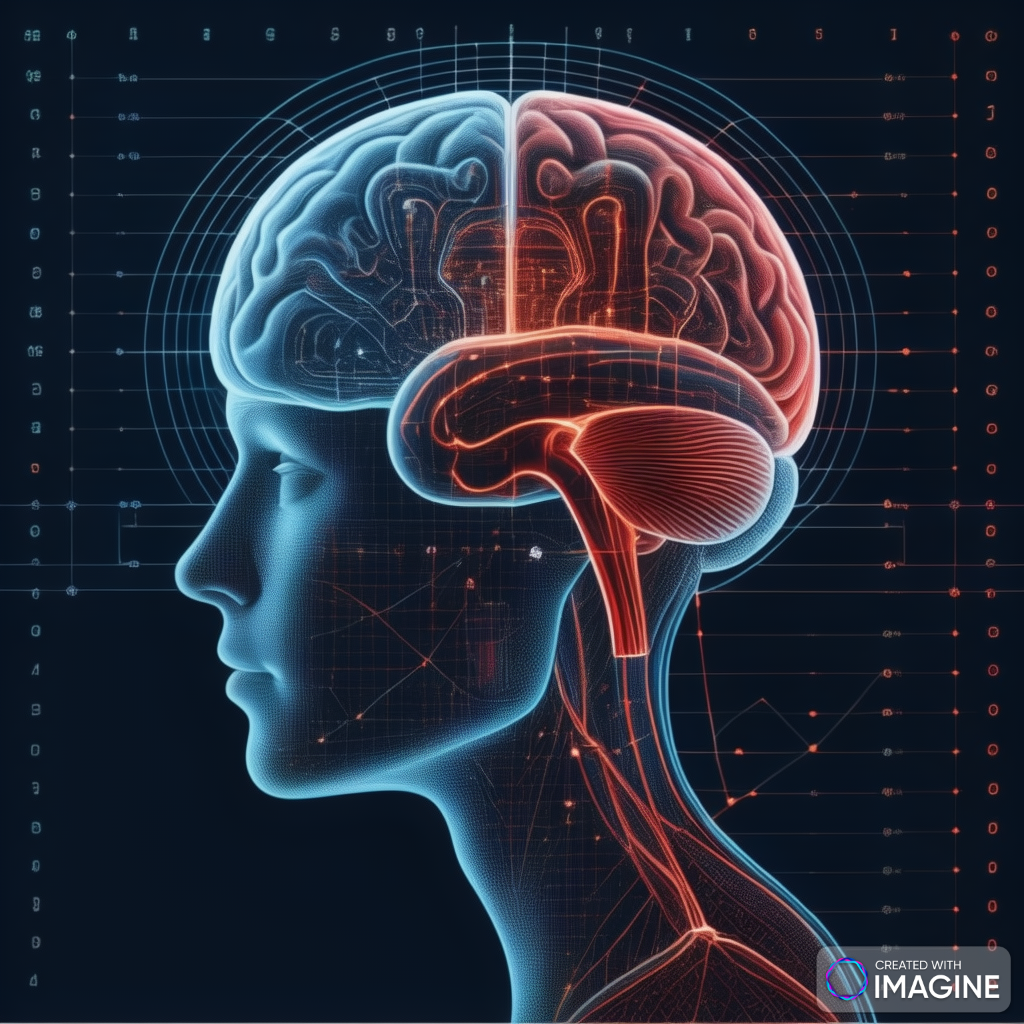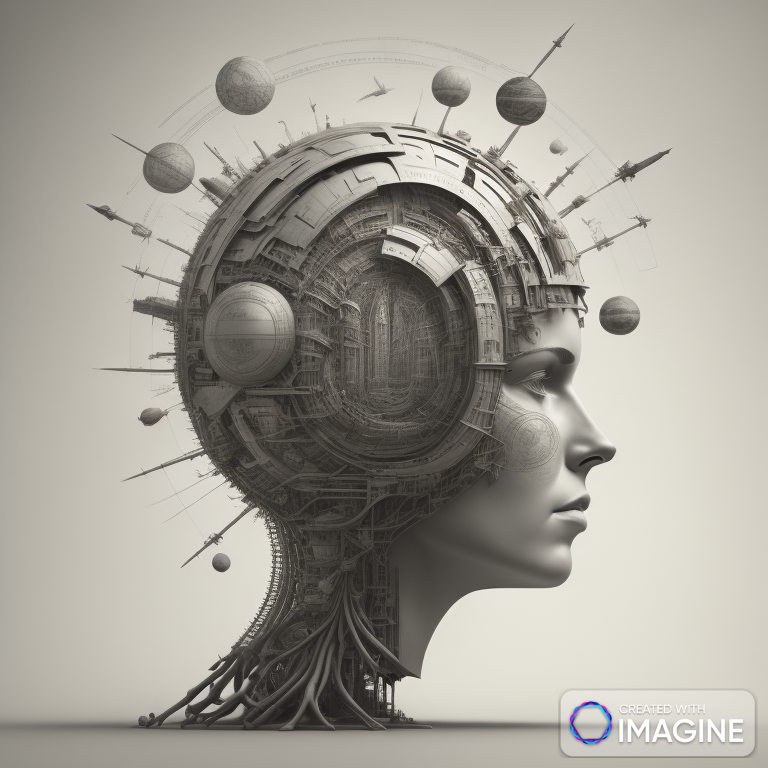Understanding Intelligent Agents, Environments, and Percepts in AI and Machine Learning
In the realms of Artificial Intelligence (AI) and Machine Learning (ML), the concept of an intelligent agent is foundational. These agents are the driving force behind decision-making processes, learning, and adaptation in various environments. To fully appreciate the power and complexity of AI, it is crucial to understand the relationship between intelligent agents, the environments they operate in, and the percepts they utilize to make informed decisions. This blog post delves into these core concepts, exploring how they interact and contribute to the development of AI and ML systems.
1. What is an Intelligent Agent?
An intelligent agent is an entity that can perceive its environment through sensors and act upon that environment through actuators. The agent’s primary goal is to achieve a specific set of objectives, which could range from solving a problem to optimizing a certain process. These agents can vary in complexity from simple, rule-based systems to highly sophisticated AI models capable of learning and adaptation.
Key Characteristics of Intelligent Agents:
- Autonomy: The ability to operate without human intervention, making decisions based on the environment and the agent’s goals.
- Reactivity: The capability to perceive changes in the environment and respond accordingly.
- Proactiveness: The ability to exhibit goal-directed behavior by taking initiative to achieve objectives.
- Social Ability: The capacity to communicate and collaborate with other agents or humans.
2. The Role of the Environment
The environment in which an intelligent agent operates plays a crucial role in determining the agent’s behavior and decision-making process. The environment provides the context in which the agent’s actions take place, and it can be characterized by several factors:
- Observability: The extent to which the agent can perceive the environment. An environment can be fully observable, where the agent has complete information, or partially observable, where the agent has limited or imperfect information.
- Determinism: In a deterministic environment, the outcome of an action is predictable and depends solely on the current state and the action performed. In contrast, a stochastic environment introduces uncertainty, where actions may lead to different outcomes even when repeated in the same state.
- Dynamic vs. Static: A dynamic environment changes over time, independently of the agent’s actions, requiring the agent to adapt. A static environment remains constant unless acted upon by the agent.
- Discrete vs. Continuous: In a discrete environment, there are a finite number of states and actions, while in a continuous environment, the states and actions can take on any value within a range.
- Episodic vs. Sequential: In an episodic environment, the agent’s actions are divided into distinct episodes, with no dependency between them. In a sequential environment, the current action influences future states, creating a dependency across time.
3. Understanding Percepts
A percept is the agent’s perception of the environment at any given moment. It includes all the information the agent gathers from its sensors, which it then uses to make decisions. Percepts are crucial for the agent to understand the environment, predict future states, and choose the most appropriate actions.
Types of Percepts:
- Visual Percepts: Information gathered through visual sensors, such as cameras, which can include images, shapes, colors, and motion.
- Auditory Percepts: Sounds and auditory signals that the agent can interpret, often used in speech recognition systems.
- Tactile Percepts: Physical sensations or touch-related information, which can be important in robotics or haptic feedback systems.
- Environmental Percepts: Data related to temperature, humidity, pressure, or other environmental factors that could influence the agent’s decisions.
Percepts are often processed through various algorithms and techniques in AI and ML, such as computer vision, natural language processing (NLP), and sensor fusion. These processed percepts help the agent form a comprehensive understanding of the environment.
4. The Perception-Action Loop
The perception-action loop is a fundamental concept that describes the continuous interaction between an agent and its environment. The loop consists of three primary steps:
- Perception: The agent gathers information about the environment through its sensors, creating percepts.
- Decision-Making: Based on the percepts and the agent’s objectives, it decides on an action that it believes will lead to the desired outcome.
- Action: The agent executes the chosen action using its actuators, which in turn may alter the environment.
This loop repeats continuously, enabling the agent to interact with the environment in real-time, adapting to changes, learning from experience, and refining its decision-making processes.
5. Types of Intelligent Agents
Intelligent agents can be categorized based on their complexity and capabilities:
- Simple Reflex Agents: These agents act solely based on current percepts, following predefined rules. They do not consider the history of percepts or future consequences of their actions. An example is a thermostat that turns on the heater when the temperature drops below a certain threshold.
- Model-Based Reflex Agents: These agents maintain an internal model of the environment, allowing them to track past states and predict future states. This model helps them make more informed decisions compared to simple reflex agents.
- Goal-Based Agents: These agents not only consider the current state but also evaluate potential actions based on a goal. They can plan ahead to achieve the desired outcome, considering the long-term impact of their actions.
- Utility-Based Agents: These agents assign a utility value to each possible outcome and choose the action that maximizes their expected utility. This allows for a more nuanced approach to decision-making, especially in complex or uncertain environments.
- Learning Agents: These agents can learn from their experiences, improving their performance over time. They adjust their behavior based on feedback, refining their internal models and decision-making processes.
6. Applications of Intelligent Agents
Intelligent agents are widely used in various domains, including:
- Autonomous Vehicles: Self-driving cars use intelligent agents to perceive their surroundings, make decisions, and navigate through traffic safely.
- Robotics: Robots in manufacturing, healthcare, and service industries rely on intelligent agents to perform tasks autonomously.
- Recommendation Systems: Online platforms like Netflix and Amazon use intelligent agents to recommend content or products based on user preferences and behaviors.
- Game AI: Intelligent agents in video games control non-player characters (NPCs), creating dynamic and engaging gameplay experiences.
7. Challenges in Developing Intelligent Agents
Creating intelligent agents that can operate effectively in complex environments poses several challenges:
- Perception and Interpretation: Accurately perceiving and interpreting the environment can be difficult, especially in noisy or ambiguous situations.
- Decision-Making in Uncertain Environments: Agents must make decisions with incomplete or uncertain information, requiring sophisticated algorithms and models.
- Learning from Experience: Developing agents that can learn effectively from experience and adapt to new situations is a significant challenge, especially in dynamic environments.
- Ethical Considerations: Ensuring that intelligent agents act ethically and align with human values is crucial, particularly in sensitive applications like healthcare or security.
8. Future Directions
The future of intelligent agents in AI and ML is promising, with ongoing research focused on enhancing their capabilities:
- Explainable AI: Developing agents that can explain their decisions and actions, making them more transparent and trustworthy.
- Multi-Agent Systems: Exploring how multiple intelligent agents can collaborate, communicate, and coordinate to solve complex problems.
- Human-Agent Interaction: Improving the interaction between humans and intelligent agents, making them more intuitive and effective partners.
- Advanced Learning Techniques: Leveraging deep learning, reinforcement learning, and other advanced techniques to create agents that can learn and adapt more efficiently.
Expanding on Intelligent Agents, Environments, and Percepts in AI and Machine Learning
In the realm of Artificial Intelligence (AI) and Machine Learning (ML), the concepts of intelligent agents, environments, and percepts are fundamental building blocks. Understanding these from both basic and advanced perspectives is crucial for anyone diving into AI. In this extended discussion, we’ll delve deeper into each concept, exploring nuances, advanced topics, and practical applications.
1. Defining Intelligent Agents: From Basics to Advanced Concepts
At its core, an intelligent agent is any system that perceives its environment through sensors and acts upon that environment through actuators to achieve specific goals. While this definition might seem straightforward, the range of what qualifies as an intelligent agent is vast, from simple thermostats to highly complex AI systems.
Basic Concepts:
- Agent Structure: Every agent comprises four main components: sensors, actuators, a decision-making unit (often a controller or brain), and memory. The memory stores the agent’s history and is crucial for decision-making.
- Simple Reflex Agents: These are the most basic form of agents, acting purely on the current percept without considering history. They are often implemented using condition-action rules (if-then statements).
Advanced Concepts:
- Cognitive Agents: These are advanced intelligent agents modeled on human cognition. They use complex algorithms to simulate reasoning, learning, and memory processes. Cognitive agents often employ techniques from cognitive science, neuroscience, and psychology to better mimic human thought processes.
- Agents with Emotional Intelligence: Emotional AI aims to create agents that can recognize, interpret, and respond to human emotions. Such agents use affective computing techniques to enhance human-agent interaction, making them more empathetic and socially aware.
- Embodied Agents: Unlike disembodied software agents, embodied agents have a physical presence in the world, such as robots. These agents interact with the physical world, requiring them to process sensory data and perform physical tasks.
2. The Environment: A Deep Dive into Agent-Environment Interactions
The environment is the external context in which an agent operates. The complexity and nature of the environment significantly impact the agent’s design and behavior.
Basic Concepts:
- Types of Environments:
- Fully vs. Partially Observable: Fully observable environments provide all necessary information at any given time, while partially observable environments hide certain aspects, requiring agents to make decisions based on incomplete data.
- Static vs. Dynamic: In a static environment, the state does not change unless acted upon by the agent, while in a dynamic environment, the state changes over time, potentially independently of the agent’s actions.
Advanced Concepts:
- Multi-Agent Environments: In many real-world scenarios, multiple agents operate within the same environment. These agents may cooperate, compete, or remain neutral towards each other. Multi-agent systems require sophisticated strategies for communication, coordination, and conflict resolution.
- Adversarial Environments: These are environments where agents face opponents with conflicting goals. A classic example is in games like chess, where one agent’s gain is another’s loss. Designing agents for adversarial environments involves advanced strategies such as game theory, minimax algorithms, and reinforcement learning.
- Continuous Environments: In contrast to discrete environments, where states and actions are clearly defined and finite, continuous environments involve infinite states and actions. For example, in autonomous driving, the environment is continuous, requiring the agent to continuously adjust its actions based on the fluid nature of its surroundings.
3. Percepts: Beyond Basic Sensing
Percepts are the pieces of information that an agent gathers about the environment. These form the basis of the agent’s knowledge and drive its decision-making process.
Basic Concepts:
- Raw vs. Processed Percepts: Initially, percepts are raw data captured by the agent’s sensors. This data must often be processed, filtered, and interpreted to be useful. For instance, a camera’s raw image might need to be processed to detect edges, colors, or objects before it can be used by the agent.
Advanced Concepts:
- Hierarchical Perception Models: Advanced agents use hierarchical models to process percepts at different levels of abstraction. For example, a robot might first detect edges in an image, then identify shapes, and finally recognize objects.
- Context-Aware Perception: Agents can be designed to perceive the environment in context-sensitive ways, meaning they adjust their perceptual processes based on the situation. For example, a surveillance drone might use different perception algorithms depending on whether it’s flying in a crowded urban area or an open field.
- Temporal Perception: Temporal perception involves understanding how percepts evolve over time. Agents with temporal perception capabilities can detect patterns, trends, and anomalies by analyzing sequences of percepts. This is critical in applications like video analysis or predictive maintenance, where understanding changes over time is essential.
4. The Perception-Action Cycle: A Detailed Exploration
The perception-action cycle is the fundamental loop through which an agent interacts with its environment. It’s a continuous process where perception leads to action, which in turn affects the environment, leading to new percepts.
Basic Concepts:
- Simple Perception-Action Loops: In simple reflex agents, this loop is direct and immediate. The agent perceives something and immediately acts based on a predefined rule.
Advanced Concepts:
- Complex Perception-Action Loops: In more advanced agents, this loop can involve multiple layers of processing, including reasoning, planning, and learning. For example, an autonomous vehicle perceives its surroundings, predicts future events (like the movement of pedestrians), plans its route, and then acts by steering or braking.
- Feedback Mechanisms: Advanced agents incorporate feedback mechanisms to refine their perception-action loops over time. This can involve adjusting their perception strategies based on the success or failure of past actions.
- Predictive Perception: Predictive perception involves anticipating future states of the environment based on current percepts. For example, a trading algorithm might predict market trends based on current financial data and adjust its actions accordingly.
5. Learning and Adaptation in Intelligent Agents
Learning is a critical aspect of intelligence in both humans and machines. Learning agents are designed to improve their performance over time by learning from experience.
Basic Concepts:
- Supervised Learning: The agent learns from labeled data, with each percept paired with the correct action or outcome. This is common in image recognition, where the agent learns to identify objects based on labeled examples.
- Reinforcement Learning: The agent learns by interacting with the environment, receiving rewards or punishments based on its actions. This type of learning is crucial for agents operating in dynamic and uncertain environments.
Advanced Concepts:
- Unsupervised and Semi-Supervised Learning: In unsupervised learning, the agent must identify patterns and structure in the data without explicit labels. Semi-supervised learning combines aspects of both supervised and unsupervised learning, using a small amount of labeled data alongside a large amount of unlabeled data.
- Meta-Learning: Also known as “learning to learn,” meta-learning involves an agent learning to improve its learning processes. This allows the agent to adapt quickly to new tasks by leveraging past experiences. Meta-learning is especially useful in environments where the agent encounters new, unseen situations.
- Continual Learning: Continual learning refers to an agent’s ability to learn continuously without forgetting previous knowledge. This is essential for agents operating in environments that change over time, as they need to adapt to new conditions while retaining knowledge from past experiences.
6. Ethics and Social Implications of Intelligent Agents
As intelligent agents become more integrated into society, ethical considerations are increasingly important. These considerations go beyond the technical aspects and touch on the societal impact of AI.
Basic Concepts:
- Bias in AI: Intelligent agents can inherit biases present in their training data, leading to unfair or discriminatory outcomes. Addressing bias requires careful data selection, preprocessing, and algorithmic fairness techniques.
- Privacy Concerns: Agents that gather percepts from the environment may inadvertently collect sensitive personal information. Ensuring that intelligent agents respect privacy and comply with regulations like GDPR is crucial.
Advanced Concepts:
- Ethical Decision-Making: Advanced agents, especially those operating in critical domains like healthcare or autonomous vehicles, must be able to make ethical decisions. This involves programming agents with ethical principles or frameworks that guide their behavior in morally complex situations.
- Human-Agent Interaction: As agents become more advanced, the nature of human-agent interaction becomes more complex. Ensuring that these interactions are intuitive, trustworthy, and ethical is a significant challenge. This includes designing agents that can explain their decisions, build trust with users, and operate transparently.
- AI Governance: The deployment of intelligent agents in society raises questions about governance and regulation. Who is responsible for the actions of an autonomous agent? How do we ensure that these agents align with societal values and norms? These are critical questions that need to be addressed as AI continues to evolve.
7. Agents in Distributed and Cloud Environments
With the rise of cloud computing and distributed systems, intelligent agents are increasingly deployed in these environments, which offers both challenges and opportunities.
Basic Concepts:
- Distributed Agents: These agents operate across multiple machines or nodes in a network, often collaborating to achieve a common goal. This is common in large-scale applications like search engines or distributed sensor networks.
- Cloud-Based AI: The cloud provides the computational power and storage needed to deploy complex AI models. Cloud-based agents can access vast amounts of data and processing resources, enabling them to perform tasks that would be impossible on a single machine.
Advanced Concepts:
- Federated Learning: Federated learning is a decentralized approach where multiple agents learn collaboratively without sharing their raw data. This technique is used in applications where data privacy is paramount, such as in personalized healthcare or mobile device AI.
- Edge Computing: In contrast to cloud computing, edge computing involves processing data closer to the source (e.g., on a local device or sensor) rather than in a centralized cloud. Edge agents must be lightweight and efficient, capable of making decisions with limited resources and connectivity.
- Distributed Consensus: In distributed systems, agents often need to agree on certain decisions, such as the state of a system or the outcome of a computation. Achieving consensus in a distributed environment, especially in the presence of faulty or malicious agents, is a complex problem. Techniques like the Byzantine Fault Tolerance (BFT) and blockchain are used to address these challenges.
8. Future Trends in Intelligent Agent Research
The field of intelligent agents is rapidly evolving, with new trends and technologies emerging that push the boundaries of what these systems can do.
Basic Concepts:
- Explainable AI (XAI): As intelligent agents become more complex, understanding how they make decisions becomes more challenging. XAI aims to make AI systems more transparent and interpretable, helping users trust and understand their decisions.
Advanced Concepts:
- Artificial General Intelligence (AGI): AGI refers to AI systems with general cognitive abilities, similar to human intelligence. Unlike narrow AI, which is designed for specific tasks, AGI can adapt to a wide range of tasks and environments. The development of AGI represents one of the most ambitious goals in AI research.
- Neurosymbolic AI: This emerging field combines neural networks with symbolic reasoning, aiming to create agents that can learn from data while also reasoning abstractly. This hybrid approach seeks to overcome the limitations of purely data-driven AI by integrating logic and knowledge representation.
- Quantum Agents: Quantum computing has the potential to revolutionize AI by enabling agents to process information in fundamentally new ways. Quantum agents could leverage quantum algorithms to solve problems that are intractable for classical agents, such as simulating complex systems or optimizing large-scale operations.
This expanded exploration offers a more in-depth understanding of intelligent agents, environments, and percepts, covering both fundamental and advanced topics. Whether you’re new to the field or looking to deepen your knowledge, these concepts form the backbone of AI and ML, providing a solid foundation for further study and application.
Conclusion
The interplay between intelligent agents, their environments, and percepts forms the backbone of AI and ML systems. As these technologies continue to evolve, understanding these core concepts is essential for anyone interested in the field. Intelligent agents, guided by percepts and influenced by their environments, are transforming industries and paving the way for a future where machines can think, learn, and act autonomously.






